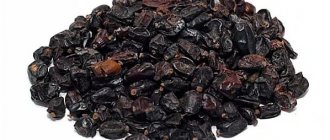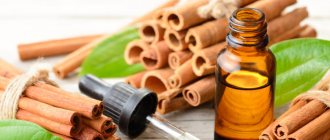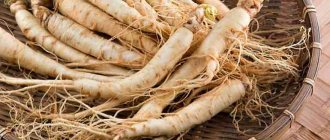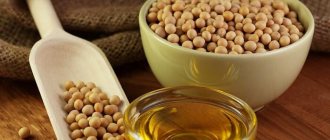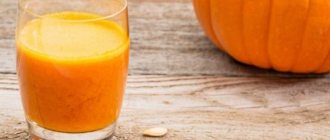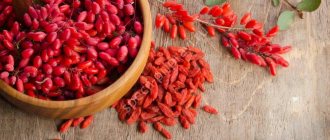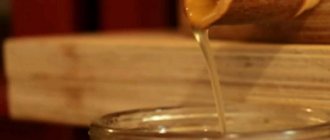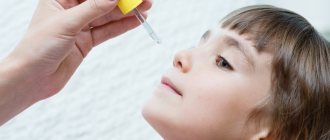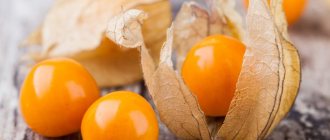Hi all! Today we’ll talk about treatment with celandine.
I would like to share the information I have collected about a very famous and common herb that my grandmother advised to use.
And grandma, as you know, won’t give bad advice.
This is “golden grass”, also known as “warthog”, also known as “witch’s grass”. Don’t be alarmed, we are not talking about a known repeat offender.
Today I will tell you in detail about treatment with celandine.
Chemical composition of celandine
Celandine juice contains many substances with biological activity.
However, its pharmacological properties are due mainly to the following list of components:
- Essential oils: have antispasmodic and calming effects. When using drugs based on the plant under discussion internally, it is possible to relieve spasms of the smooth muscles of internal organs, including during painful menstruation.
- Amines: take part in the regulation of metabolic processes, normalize high blood pressure, and have the properties of peripheral vasodilators.
- Alkaloids: celandine juice contains more than twenty substances of this group, which affect the human body in a calming, analgesic, and locally irritating manner. In addition, alkaloids reduce the level of excitability of peripheral nerves and increase intestinal motility.
- Saponins: have a mainly diuretic effect. They are used as part of aqueous decoctions and infusions of celandine.
- Flavonoids: natural antispasmodics and immunostimulants. They reduce the level of allergic alertness of the body, relieve spastic phenomena of smooth muscles, and have anti-cancer and anti-inflammatory effects.
- Organic acids and vitamins: take part in metabolic processes, stimulate immune mechanisms, and have a general strengthening effect.
It is important to know that the full active substances of celandine are contained only in the juice of a freshly cut plant. The medicinal properties of the herb are preserved even when stored in dried form, but the necessary harvesting rules must be followed (dry in a dry, ventilated place, out of direct sunlight).
Celandine: medicinal properties - review
It's easy to appreciate nature's bounty just by taking a quick look at the diverse range of conditions for which effective treatments exist:
- Skin - eczema, neurodermatitis, various dermatitis, papillomas and even cancer;
- Stomach and intestines - gastritis, gastroduodenitis, stomach and duodenal ulcers, intestinal dysbiosis, hemorrhoids, fissures, polyposis and rectal tumors;
- Liver and biliary tract - cholangitis, cholecystitis, hepatitis;
- Lungs and bronchi - bronchial asthma, whooping cough, chronic obstructive pulmonary disease;
- Ears, throat and nose - laryngeal papillomatosis, wax plugs in the ears, otitis media, tonsils, adenoids and acute runny nose due to allergies or infections;
- Eyes and vision - cataracts and glaucoma;
- Metabolism and reproductive system - diffuse goiter and other pathologies of the thyroid gland, fibroids and uterine polyposis;
- Systemic anticancer effects , including after chemotherapy or surgical removal of a tumor - to prevent metastasis.
Some of us first became acquainted with celandine long before adulthood. Have you also removed warts with celandine juice in the summer at the dacha or in the village visiting your grandmother? A bright orange drop from the stem three or four times a day and - unnoticed! - the wart disappeared. Such a simple treatment took no more than 2 weeks. And this is a vivid example of how our ancestors managed without pharmacies and synthetic drugs.
Although celandine has also penetrated into official medicine. On its basis, ointments are produced for the treatment of dry calluses, warts and other skin formations. The water infusion is popular in hepatology, as it has a bactericidal and choleretic effect. And in oncology in the CIS countries they use a certified drug from celandine alkaloids - Ukrainian.
However, not every treatment involving celandine is as simple and harmless as the experience with warts from rural childhood. The flip side of the positive properties is the recognized toxicity of the plant.
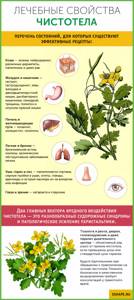
What beneficial properties does celandine have?
The beneficial properties of celandine are due to the substances included in its composition.
These include:
- antispasmodic effect: the plant relieves spasms of smooth muscle organs (uterus, intestines);
- anti-inflammatory and analgesic effect: due to the alkaloids and substances contained in the juice that have the ability to block the production of inflammatory mediators, celandine reduces the intensity of inflammatory processes and reduces pain;
- diuretic and mild laxative effect: due mainly to the antispasmodic activity of the herb, as well as the ability of the alkaloid sanguinarine to enhance intestinal motility;
- antiviral and bactericidal effect: flavonoids have a bactericidal effect on bacterial microflora and a virucidal effect on some viruses (FLU);
- antitumor activity: due to the presence of flavonoids, celandine is able to have a cytostatic effect on malignant tumor cells;
- restorative: vitamins and organic acids included in the juice increase the level of immune protection.
In addition to all of the above, celandine juice has a cauterizing effect. In small quantities it is used in folk medicine to treat warts and papillomas of various origins.
Celandine tincture
- The best folk remedies from celandine
We bring to your attention two ways to prepare alcohol tincture of celandine.
Recipe No. 1
Using a tincture of fresh celandine, you can treat malignant tumors, tuberculosis, skin diseases, and goiter. It is best to prepare the tincture in early summer, when the grass is the juiciest.
Take:
- fresh celandine grass;
- alcohol 70%.
Cooking method:
- Place the chopped grass in a liter jar; it should fill the entire jar.
- Fill the raw material with alcohol to the top.
- Leave in the dark for 14 days (longer is possible).
The result is a powerful drug that must be taken with caution. You need to start taking it with small doses - 5-10 drops per day and gradually increase to 50 drops. The course of treatment for cancer is at least 6 months.
Recipe No. 2
To prepare the tincture for this recipe, take:
- freshly harvested celandine grass;
- vodka.
Cooking method:
- Pass the celandine through a meat grinder and squeeze out the juice through cheesecloth.
- Mix juice with vodka in a 1:1 ratio.
- Place the bottle with the mixture in a dark place for 2 weeks.
The dose must be selected individually, given that celandine is a poisonous plant.
Indications for use
The medicinal properties of celandine allow it to be used to treat many diseases. In traditional medicine, plant extracts and extracts are included in medicines. Folk recipes prescribe using the herb in its pure form, brewing it in the form of a decoction or infusion. An alcohol tincture of celandine is also used.
The list of indications for taking celandine-based products includes:
- Inflammatory diseases of the respiratory system: rhinitis, tracheitis, tonsillitis, otitis.
- Diseases of the nervous system: neuroses, migraines.
- Gynecological pathology: endometriosis, vaginitis, colpitis.
- Diseases of the intestines and stomach: gastritis, enteritis.
- Oncological diseases: skin cancer, stomach cancer.
- Dermatological diseases: papillomas, psoriasis, eczema, acne.
- Liver diseases: hepatitis, cholecystitis.
Celandine can also be used as an anesthetic for mild or moderate pain. Substances contained in the plant help reduce the intensity of pain. However, this remedy should be used only in extreme cases. Modern medicine has many more effective and less toxic drugs for pain relief.
Despite the spread of celandine in folk medicine, official medical science is reserved about the use of this plant. The fact is that preparations based on celandine can have a serious negative effect on the human body.
If the dosage is exceeded or individual intolerance, the patient may develop convulsions and symptoms of damage to the gastrointestinal tract. In case of careless local use, chemical burns of the skin or mucous membranes may occur.
Atherosclerosis, hypertension, migraine
Atherosclerosis . Use celandine:
Brew 1 tsp. herbs with a glass of boiling water, leave in a warm place for two hours, strain. Take 1/4 cup on an empty stomach in the morning and evening for 10 days.
Hypertension. For treatment, a composition based on celandine is used:
Mix 2 tbsp. celandine and knotweed, 1 tsp each. calendula flowers, valerian roots. Brew 1 tsp. mixture 0.5 liters of boiling water, leave for 2 hours, strain. Take 1 tbsp. an hour after eating for one to two weeks.
Headache, migraine:
Infuse for a month and a half in 0.5 liters of vodka 1 tsp. calendula flowers and 1/2 tsp. celandine, strain. Use for medicinal purposes 5-10 drops in a glass of water twice a day. Store in a glass container.
What diseases does it treat?
As mentioned above, celandine is used in the treatment of many diseases of various profiles. Herbalists recommend using it in the treatment of hepatitis, gastritis, cancer, migraines, inflammatory diseases of the respiratory system, gynecological inflammatory processes, etc.
At the same time, representatives of official medical science warn against too active use of celandine, careless use of which can cause poisoning or skin burns.
In addition to medicinal use, the herb has also gained recognition in the field of cosmetology. Based on it, experts create oils and balms intended for rubbing into the skin. These products can improve the condition of the skin, get rid of acne, and speed up the healing of small wounds and cracks.
Professional preparations of celandine are, as a rule, safe, since they do not contain toxic concentrations of the active substance.
Method of using celandine
In folk medicine, the plant is used to treat a wide range of diseases. Based on celandine, decoctions, tinctures, ointments, compresses, lotions, candles, and baths are prepared. Before treatment with such drugs, you should consult a doctor to exclude contraindications and prevent side effects.
Juice
For medicinal purposes, fresh or canned grass juice is used. It is used to combat warts, herpes, scabies, and psoriasis. In summer, you can squeeze fresh juice from the stems. To prepare a healthy liquid for the winter, it is squeezed out of ground grass, then filtered and allowed to ferment.
In its pure form, the juice is used to remove papillomas and warts without surgery. People even call celandine a warthog. To treat other skin lesions, creams and ointments with the addition of beneficial liquid are used. A solution of a small amount of juice diluted with water is taken orally for psoriasis and used as a gargle.
Ointment
Celandine ointments are used as a local remedy for skin lesions. The drug has anti-inflammatory, wound-healing, analgesic, and antibacterial properties. The ointment is intended for the treatment of:
- eczema;
- diathesis;
- psoriasis;
- skin tuberculosis;
- herpes;
- fungal infections of the skin;
- wounds, burns, ulcers;
- calluses;
- warts;
- age spots.
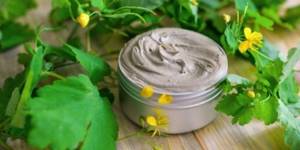
Extract
Cholelitin and other complex pharmaceutical preparations with choleretic and antispasmodic properties include Altai mountain celandine extract. The liquid concentrate is used to cauterize skin lesions. To prepare the extract at home, mix the herb juice with vodka or alcohol in a 2:1 ratio.
Before use, a sensitivity test must be performed. Apply a little extract to the crook of your elbow and wait a few minutes. The appearance of burning, swelling, rash, redness or itching is a contraindication for treatment with the drug.
Articles on the topic
- Useful properties of licorice - recipes, indications for children and adults
- Treatment of retinal dystrophy with folk remedies - effective recipes with photos
- Badger fat - medicinal properties and contraindications for a child or adult
Tincture
A tincture is prepared from fresh leaves, flowers or stems of celandine. To obtain it, plant materials are mixed with alcohol or vodka. The product can be used externally in the form of lotions or compresses to treat joints. Tincture of celandine in vodka, taken orally, helps against helminths, diseases of the respiratory system, relieves inflammation, spasms, pain in the joints and reproductive organs.
Decoction
A water-based decoction of celandine is prepared from dried herbs. In the absence of contraindications, the liquid is used as part of complex therapy for the treatment of inflammatory, oncological, and gynecological diseases. The product helps strengthen the immune system and nervous system.
A decoction in the form of an enema will be beneficial in the fight against parasites in the intestines; lotions based on it are used to treat skin pathologies. Thanks to its ability to remove excess water and waste from the body, and reduce appetite, the medicine is effective for weight loss.
Traditional recipes using celandine
In folk medicine, celandine is used mainly in three forms: tincture, decoction, and fresh plant juice. The first and second types of drugs are prescribed for oral administration. The juice is used to treat skin defects.
Celandine grass juice
In summer, the grass juice can be used in its pure form. To do this, you need to pick a fresh stem about 15 cm high, on the cut of which a milky-white liquid will be visible. It is applied to the source of pathology (wart), after which the rest of the stem is thrown away. As a rule, 5-6 procedures are enough to remove a wart.
You can preserve your juice supply for the whole year by canning. To do this, you need to take the young stems of the plant, rinse and pass through a meat grinder. The juice is squeezed out of the resulting mass using a juicer. Next, the product is poured into a glass jar and put in the refrigerator for three days.
On the fourth day, the container with the juice is taken out, the product is filtered through several layers of gauze, removing solid fractions. The juice itself is poured into clean jars, covered with a lid with small holes (the holes are necessary for gas to escape during fermentation) and put back in the refrigerator. In this form, the product can be stored for up to 1 year.
The use of canned celandine juice does not differ from its fresh variety. The product is used for application to areas of skin pathology. The frequency of treatment depends on the type and characteristics of the pathology. Warts and papillomas are treated 1-2 times a day for a course of up to 5-6 days.
As a rule, this is enough. The juice is applied to psoriatic lesions twice a day. The exposure time is 20 minutes, after which the product must be washed off with warm water. The course of treatment is until a therapeutic effect is achieved. Usually 1-2 weeks.
For minor skin lesions, the juice is applied 2 times a day, along the edges of the wound, until it is completely healed. The drug is not injected into the wound itself. To remove herpetic eruptions, the juice is mixed with Vaseline in a ratio of 1:4. The resulting product is used to treat rashes 3-4 times a day until they disappear completely.
Tincture
To prepare a celandine-based tincture, you should use fresh fleshy leaves collected at the beginning of the summer season. The raw materials are washed, dried and crushed using a knife or meat grinder.
Next, it is placed in a glass jar, loosely filling it to the top, and filled with 70% ethyl alcohol, which does not contain impurities. It is possible to use vodka, but in this case the preparation time will double.
After the crushed leaves of celandine are filled with alcohol, the product is placed in a darkened room for 2 weeks (if using vodka - for 1 month).
After the specified period of time, the celandine tincture is considered suitable for use. However, there is no need to stop cooking it. Celandine leaves are left in alcohol further, which allows you to constantly increase the concentration of the product until the medicinal substances from the raw material are completely transferred into alcohol.
The tincture is taken for a long time. In this case, it is necessary to follow certain treatment rules. So, from the first to the third week of the course, the drug is taken 5 drops per day, at a time.
Next, the volume of drops is increased weekly by 10 until the number reaches 50. Before taking the medicine, dilute it in a glass of warm drinking water. The duration of treatment varies depending on the type of pathology.
So, for cancer and tuberculosis, the course lasts up to six months, for neurological pathology its duration is 2-3 months. For diseases of the musculoskeletal system, drink celandine for 3-4 months.
Decoction
A decoction is prepared from fresh or dried celandine. To prepare it, pour 2 tablespoons of crushed raw materials into 1 liter of water and boil for 3 minutes. After this, the product is cooled for an hour, filtered and considered ready for use.
Decoctions of celandine can be used for rinsing or taken orally. Rinsing with a decoction is relevant for thrush, inflammatory gynecological diseases, stomatitis and gingivitis.
To carry out the procedure, take the product into your mouth, rinse it for 30 seconds, and then spit it out. The oral cavity is rinsed with clean water. The procedure is repeated once a day until the symptoms of the disease disappear. Rinsing for gynecological diseases is carried out using a syringe.
A decoction of celandine is taken internally for oncological diseases, diseases of the stomach and intestines, neuroses and neuritis, as well as for other internal ailments indicated in the corresponding section of this article.
The product is taken once a day, half an hour before lunch, 2 tablespoons. There is no need to dilute the drug with water, but if necessary (the patient does not like the taste of the decoction, for example), this is acceptable.
Polyps
Polyps in the intestines cause discomfort, pain, heaviness, and stool disturbances. Doctors recommend surgery for treatment. Traditional medicine - use celandine.
Take 1/2-1 tsp. fresh or prepared juice, diluted with water, an hour before meals. The course of treatment is two months, after a week's break. If necessary, treat for another month or two.
Long-term use of celandine juice disrupts the balance of intestinal microflora. Repeated treatment is carried out after a year. As a rule, the juice cures polyps the first time.
Nasal polyps:
Mix celandine and chamomile juice in equal parts. Apply on turundas or instill a few drops into each nostril.
Sinusitis Treatment of chronic sinusitis, tonsillitis, rhinitis, adenoid or swelling of the mucous membrane, nasal congestion:
Place 1 drop of celandine juice diluted with water into each nostril. Wait 3-5 minutes until the pinching stops, then repeat the instillation. After a few minutes, drip celandine juice again. Apply three times a day.
The use of celandine for the treatment of sinusitis:
Mix celandine juice, aloe, and natural honey in equal parts. Place 8-10 drops into each nostril. Spit it out when the useful composition penetrates the nasopharynx.
Celandine in cosmetology at home
Celandine, or its second name, warthog, is a perennial plant. It is poisonous; when cut, you can see yellow juice. This plant is actively used in cosmetology to treat oily, problem skin. This plant received its second name for a reason. Fresh juice from the plant can be used to get rid of warts.
The most favorable period of the year for harvesting is May-July, when the plant has gained moisture and is quite juicy. What is unique about celandine? Of course, in its composition. These are all kinds of acids, vitamins A and C, flavonoids, carotene and others. To prepare medicinal decoctions and lotions, both the above-ground part of the plant (stems and flowers) and roots are used.
To combat problem skin, the juice of the plant is best suited. What's the easiest way to get it? Write down the recipe. Grind the leaves and stems in a meat grinder, place in a glass jar and leave in the refrigerator for 2-3 days.
We drain the juice through cheesecloth or a sieve. Place the juice in a cool place for fermentation for 2 weeks, periodically opening the lid. Upon completion of the process (after 3 weeks), put the resulting juice in the refrigerator. It can be used for 2 years.
A bath of dry celandine leaves will help relieve swelling and fatigue from the legs. The decoction can be made at the rate of 1 tbsp. spoon of leaves per 200 ml of boiling water. Pour in and place in a water bath for 10 minutes.
Cool the resulting broth and keep your feet in it. Also, such a decoction will be useful for problem areas of the skin and in getting rid of oily sheen. Soak a cotton pad in the chilled broth and wipe your face 2 times a day.
To get rid of acne, you can use celandine oil. Mix a couple of drops of oil with a base oil (for example, olive) and apply to the skin for 20 minutes. Rinse with water. Be sure to make a course of masks - 4 pcs. per month.
To get rid of freckles, just wipe your face with celandine juice.
If you have oily skin, you can prepare a lotion from celandine and alcohol to care for it. To do this you need to brew 1 tbsp. spoon of dry celandine herb with boiling water and simmer over low heat for 10 minutes. Cool and add alcohol. The lotion is ready. You can wipe your face with it every morning. This product is not suitable for dry and normal skin, as it will dry out the skin.
If you want to add a skin-soothing effect to such a lotion, then just add 1 tablespoon of lemon balm or mint leaves to the preparation of the decoction.
These are not all the recipes. Celandine juice is actively used in cosmetology to get rid of age spots, as it has a powerful whitening effect. This problem torments many women, and the solution to it is on the surface.
It is enough to wipe your face with celandine juice for a month. If you have an alcohol tincture, then a compress applied to problem areas for 20 minutes will be an excellent solution to this problem.
Celandine juice is actively used to treat pustules and fungal rashes. It is enough to lubricate the affected area with fresh plant juice.
Agree, not bad at all for one plant! A panacea for skin problems that plague millions of people around the world. Without harm to health, it is enough to use just one plant.
Before you decide to get rid of these diseases, read the contraindications. Like any medicine, warthog has a number of limitations for certain diseases.
First of all, angina pectoris, bronchial asthma, epilepsy and various neurological diseases. Expectant mothers and nursing mothers should refrain from using it for a while.
LiveInternetLiveInternet
Quote from Olga_Gutovskaya
Read in full In your quotation book or community!
Other names: warthog, chistukha, gladishnik, swallow grass, yellow milkweed, chistolot, dog soap. The plant is poisonous and requires serious treatment, follow the dosage. Great celandine
is a perennial herbaceous plant of the poppy family.
It is found almost everywhere. Celandine grows in shady places, gardens, parks, courtyards, forests, etc. The whole plant, but more often its above-ground part, is used for medicinal purposes. The grass is harvested during the flowering period, dried in the shade, under a canopy, in attics. It is better to store raw materials in paper bags or boxes in a cool, dry and ventilated area. The shelf life of harvested raw materials is up to 3 years. Celandine should be used according to prescriptions, avoid overdose, and in some cases under the supervision of a doctor. The use of celandine. Celandine has now gained great popularity and is a powerful remedy in the treatment of many diseases. It contains, in addition to other medicinal components, about 20 toxic substances that have a detrimental effect on many pathogenic bacteria and microorganisms. It is important, when using celandine, not to overdo the dosage, as this can lead to various side effects. Generally speaking, the plant has a fairly wide spectrum of action and is used as an anticonvulsant, anti-inflammatory, analgesic, bactericidal, sedative, antitumor, diuretic, choleretic, wound-healing, lactogenic agent. Celandine is widely used for the treatment and prevention of malignant neoplasms. The special value of celandine is that it inhibits the growth of tumors and the development of metastases. For better effectiveness against the development of metastases
, it is used together with calendula and nettle.
We take the crushed components (celandine, calendula, nettle) in equal parts, mix and make an infusion, in a thermos, in the following proportions: 1 tbsp. Pour 1 cup of boiling water (250 ml) over a spoonful of the mixture, leave for 1-2 hours, then strain. Drink half a glass in the morning and evening 20-30 minutes before meals. The ancient Greek physician Tiofos, a student of Aristotle, greatly appreciated celandine for its wonderful properties. He said that this herb cures 100 diseases and left his recommendations on how to use it correctly. Treatment with celandine should begin with weak infusions so that the body gets used to it. And also, together with taking celandine, experts recommend consuming milk and fermented milk products (kefir, cottage cheese, fermented baked milk) for better functioning of the gastrointestinal tract and reducing the toxicity of the plant. Celandine in small doses reduces blood pressure, slows down cardiac activity, calms the nervous system, it is taken for neuroses, convulsions, paralysis, epilepsy, and diseases of the pancreas. Celandine is taken orally
for bronchial asthma, gastritis, pulmonary tuberculosis, cough, whooping cough, allergies, angina pectoris, inflammation of the large intestine, stomach and duodenal ulcers, polyps of the stomach and intestines, stomach cancer, ulcerative colitis, as a choleretic for diseases of the liver and bile ducts and gallbladder, cholelithiasis, hepatitis, goiter, rheumatic joint pain.
There are known cases when hopeless patients with
pulmonary tuberculosis were cured with celandine, on whom doctors had given up; traditional medicine was powerless.
And the recipe was as follows: fill a half-liter jar with chopped dry grass (1/4 volume), pour boiling water, cover and leave for 2 hours. Take this infusion 3 times a day, half a glass, with kefir (3 or more bottles per day, half a liter of course). Infusion of celandine is used as a diuretic for dropsy, papillomatosis of the bladder, as well as for joint diseases, gout, rheumatism, polyarthritis, painful menstruation, menopause with hot flashes, and to increase lactation in nursing mothers. For polyps and
ulcerative colitis, the infusion is used orally, sometimes in combination with horsetail, sage, St. John's wort, and marina root.
In addition, they do a microenema after a cleansing enema, then put a suppository of ointment. More details about polyps, their treatment, recipes are described here. Infusion, decoction of celandine, juice of celandine, diluted with boiled water (1 teaspoon per 1/2 cup), rinse the mouth and throat for inflammation of the mucous membranes, toothache, laryngeal papillomatosis (including in children), and for periodontal disease. The decoction is used to make compresses, lotions, baths for paralysis, gout, goiter, rheumatism, polyarthritis, as well as douching for trichomonas colpitis, leucorrhoea, cervical erosion, and prostatitis (douching of the urethra for men, for infectious prostatitis). A decoction of the plant is used to wash wounds, ulcers and other skin lesions, and to wash the hair in case of hair loss or excessive dandruff. The juice is used to make lotions for lupus erythematosus, psoriasis, lichen, scabies, fungal diseases, itching, tuberculosis and skin cancer, ulcers, and tumors. Baths from a decoction of celandine are general strengthening, they are used for metabolic disorders, diathesis, itching, rashes, scrofula, psoriasis, pustular skin lesions in young men, scabies, etc. Recipes for celandine baths and others, using herbs, roots and fruits of plants, can be look on this page. Powder from dry leaves of greater celandine is sprinkled on wounds and weeping eczema. Crushed leaves, ground with pork internal fat (1:5), are used for psoriasis, skin tuberculosis, scabies, and warts. For toothache, apply a cotton swab soaked in celandine tincture to temporarily relieve the pain. Celandine decoction (externally): take 2 tbsp. tablespoons of raw material in 1 glass of water, boil for 1 minute, leave for 30 minutes, strain. Infusion of celandine (weak): pour 1 teaspoon of dry crushed herb with 1 glass of boiling water, leave for 30 minutes, strain before use. The infusion takes on the color of light straw. Take 1/4 cup, 3 times a day before meals. Infusion of celandine (concentrated): take 1 table. spoon of raw material per 1 cup of boiling water, leave for 30 minutes, strain before use, take 1/4 cup, 3 times a day before meals. Celandine juice (alcohol tincture, drops) is a good remedy against herpes, it is used to cauterize warts, polyps, calluses, warts, it is used for diseases of the liver and gallbladder, nodular goiter, instilled into the eyes for cataracts and trachoma, used for frostbite, etc. For rectal polyps, make a microenema of 5-7 drops of celandine juice per 50 ml of water. To preserve celandine juice, we prepare fresh grass, along with the roots (or without roots), wash it, cut it into small pieces of 1-2 cm, pass it through a meat grinder and squeeze out the juice through a cloth napkin. We close the jar with the juice with a lid and let it sit in the refrigerator for a couple of days. Next, carefully pour the juice into another container, throw away the sediment or use it for other purposes, for example, for baths, and add vodka at a ratio of 2:1, i.e. pour 0.5 liters of vodka into 1 liter of celandine juice, or 0. 25 liters of drinking alcohol (4:1). You can preserve celandine juice without vodka, but then you need to let the juice ferment without oxygen, under a water seal, or simply by tightly closing the juice in a plastic bottle and periodically releasing fermentation gases until they stop being released. After the juice has fermented, store it in a cool, dark place, perhaps in the refrigerator. Fermented celandine juice in its medicinal properties is almost no different from canned juice. It tastes sour, juice preserved with vodka is more pleasant. Celandine juice (alcohol tincture) is used to increase immunity, fight cancer (any) and treat many other diseases. If there is no prepared dry celandine herb, then the juice can also be used for medicinal baths, although this is more expensive. For a volume of water of 35-40 liters, add 100 ml of celandine juice, or, as mentioned above, use a thicker fraction of the juice (sediment). Treatment with celandine according to the royal method : 1. We start taking alcohol tincture (canned celandine juice) with one drop per day, and every day, increasing one more. Before taking the drops, first dilute them with water in 50-100 ml and then drink them. Having reached 15-20 drops (each has its own dose), LISTEN to your body to see if your health is worsening. As soon as you feel this, reduce the dose by 4-5 drops and take this amount until recovery, of course taking breaks depending on the disease and the course of treatment. As practice shows, everyone understands the concept of “one’s own dose” differently, so I would not recommend exceeding it more than 2 teaspoons per day, and only for cancer patients. The course of treatment usually lasts no more than 3-4 months, including breaks, and once a year. 2. The second method - everything is the same as in the first, only having reached 20 drops - we count down, reducing the dose, after which - a break of 10 days and so on for up to 3 months. For prevention, one cycle per year is enough. Celandine oil: take dry crushed grass and place it in a glass jar, fill it with peach, apricot or sunflower oil so that the oil level is 2-3 cm above the grass level. Before use, vegetable oil must be pasteurized in a water bath for 1 hour. Place the oil with the herb in a warm place for 1 hour, and then transfer it to a dark, cool place (basement) and let it sit for 1 week, shaking it occasionally. Then strain the infused oil and dilute it in a 1:1 ratio with pure oil. Use celandine oil for external use, store in a dark glass container, preferably in the refrigerator. Celandine contraindications .
An overdose can cause nausea, vomiting, and paralysis. Long-term use of celandine without interruption can lead to dystrophy of the mucous membrane of internal organs and intestinal dysbacteriosis. Preparations from celandine are contraindicated for people suffering from epilepsy, bronchial asthma, angina pectoris, neurological diseases, pregnant women, and those with individual intolerance. Although in some cases and with great caution it is still used for bronchial asthma, angina pectoris and some neurological diseases, but this is with the permission and under the supervision of a doctor. https://mplants.org.ua/view_main_right.php?id=66
Celandine: contraindications
More than 20 types of alkaloids are an explosive mixture that makes celandine poisonous to humans and animals. Therefore, neither cattle nor pigs eat it.
The two main vectors of the harmful effects of celandine are various convulsive syndromes and pathological increased peristalsis .
Celandine is capable of irritating the skin locally and strongly toning the internal organs - up to pronounced convulsive activity on the part of the nervous system, smooth muscles of the uterus and intestines.
Nausea and vomiting, diarrhea, dizziness and even paralysis of the respiratory center are an objective number of threats from taking celandine if the dose or standard period of therapy is exceeded.
While we admire the gifts of nature, we respect the solid experience of herbalists. However, we ask that you be vigilant when using celandine herbal remedies. Remember, safe and high-quality recovery requires consultation with a competent doctor.
